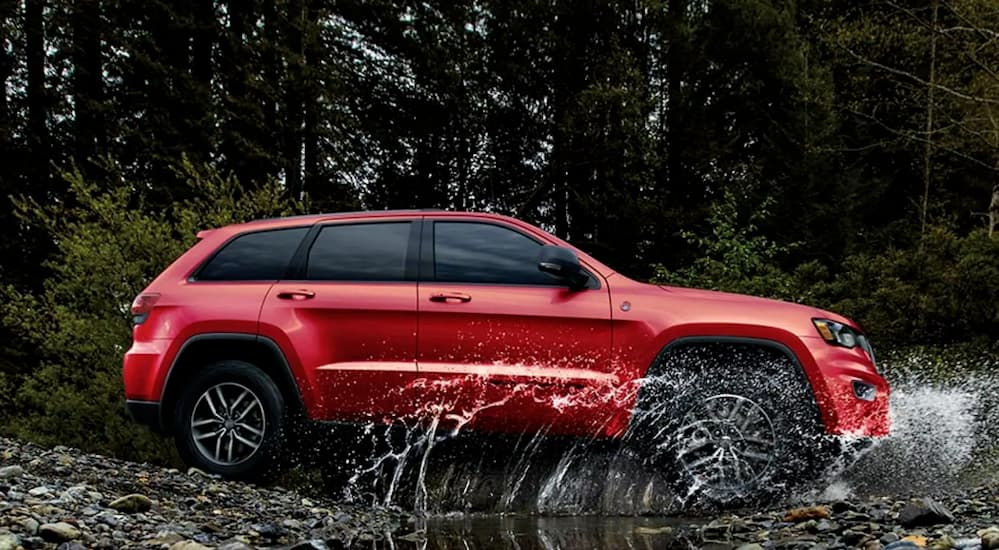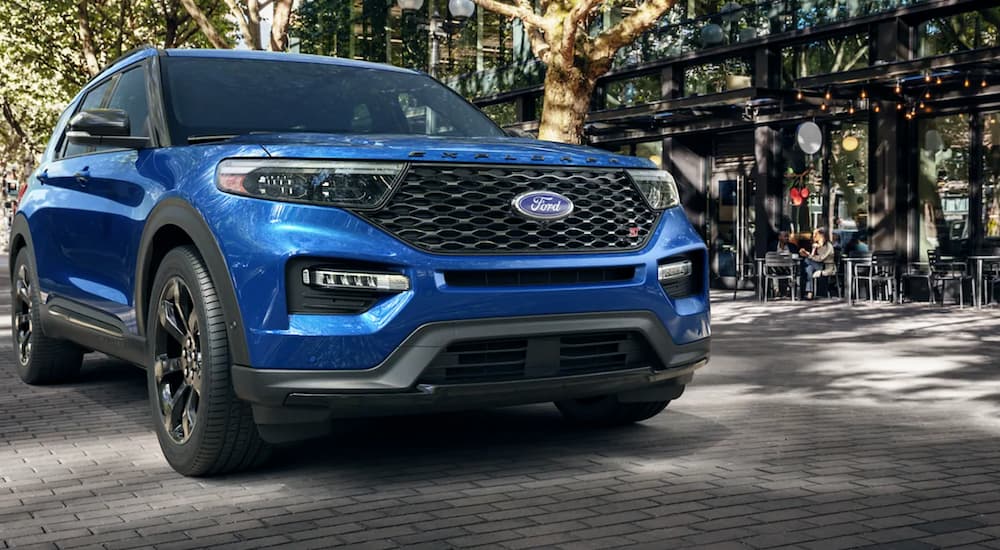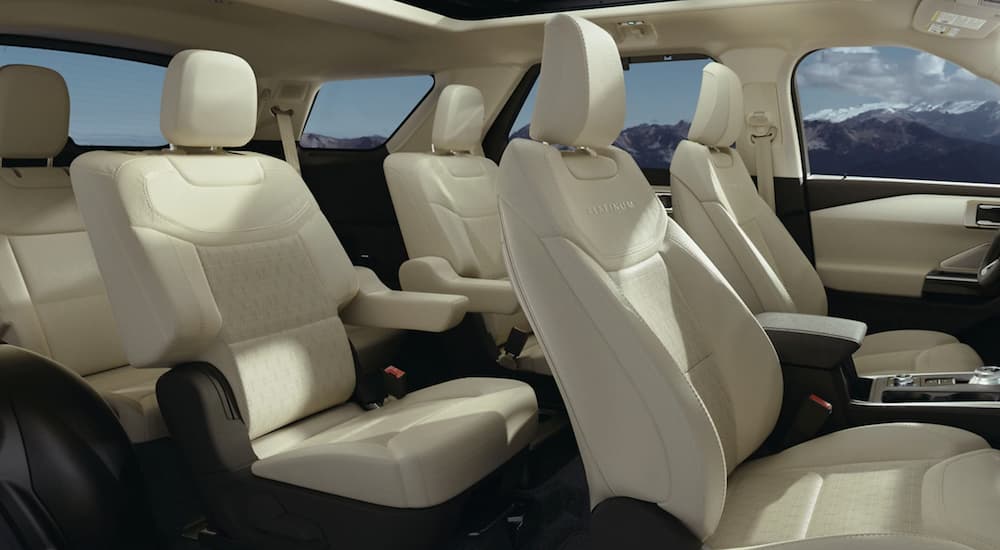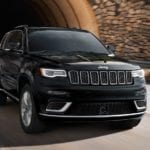A lot of times, when people try to figure out the right vehicle to get, it can come down to just two or three options that seem like a good fit. Going from there to deciding exactly the right model can be tricky, and there’s no clear guideline for which is best. When looking at two vehicles like the 2021 Ford Explorer vs 2021 Jeep Grand Cherokee, there are a lot of factors to consider and weigh against each other.
Since this is something that many people struggle with (which is understandable – it’s a big decision, and no one wants to buy the wrong vehicle), so I thought I would help. Rather than just list out specs for you to consider for these two vehicles, I’m going to talk about what you should look for in both a quantitative and qualitative manner. There will be some specs, sure, but I’m going to get into the “why” of these specs: why they matter to you. This way, whether you can see a clear winner or not, you’ll have a good idea of how to compare models in the future.
Power and Performance
The engine and overall performance is one of the best places to start when comparing a couple of vehicles because it’s a more quantitative feature than qualitative (reminder: “quantitative” means dealing with numbers and quantities, while “qualitative” means dealing with less precise things like feelings and quality). So first, let’s look at some specs for the 2021 Ford Explorer and Jeep Grand Cherokee.
The Ford Explorer has four different engines available:
- 2.3L I-4 EcoBoost: 300 hp and 310 lb-ft of torque
- 3.3L V6 Hybrid: 318 hp and 322 lb-ft of torque
- 3.0L V6 EcoBoost: 365 hp and 380 lb-ft of torque
- 3.0L V6 EcoBoost ST: 400 hp and 415 lb-ft of torque
While the Jeep Grand Cherokee also has four engines available:
- 3.6L V6 Pentastar: 295 hp and 260 lb-ft of torque
- 5.7L V8 HEMI: 360 hp and 390 lb-ft of torque
- 6.4L V8 SRT: 475 hp and 470 lb-ft of torque
- 6.2L V8 Hellcat: 707 hp and 645 lb-ft of torque

So, just looking at these numbers, we can see two different stories emerge with these vehicles. The Ford Explorer has the kind of engine progression you would expect, with a steady increase in performance – and there’s even a hybrid option. However, with the Jeep, you have a steady increase, but it’s much more dramatic, and the top option is insane for an SUV. It’s worth mentioning that with both models, half of their engines are each limited to a single high-end trim – so if you want 707 hp, for example, you have to choose the Grand Cherokee Trackhawk variant.
Now, I just did what I said not to do: focusing on numbers with no real explanation. But we needed to see what each has to offer, so now let’s talk about what those numbers really mean. In general, higher horsepower and torque means better performance – this usually translates into faster and more responsive acceleration, more towing capacity (possibly), and more fun for you behind the wheel.
But you need to really consider what these numbers mean for you as a driver. If you’re going to work every day, running errands, and occasionally going on road trips, then you really don’t need 707 hp in your SUV – you’ll never want to go from 0 to 60 in 3.5 seconds while driving around town. Good horsepower and torque can make getting onto the freeway and getting up to speed easier, that’s true, but there are reasonable limits on what you really need.
So what really matters? Well, fuel economy is important, and horsepower and torque don’t always go with that. The hybrid engine in the Explorer is almost certainly going to come out on top in terms of how often you’re going to the gas pump. Yeah, that supercharged engine in the Grand Cherokee can go from 0 to 60 in 3.5 seconds, but it gets 11 MPG in the city – 11! This is why you need to look beyond just the flashiest specs and consider what really matters to you.
Interior Space – Passengers
Speaking of what really matters, you should never underestimate the importance of being comfortable on the road. While things like comfortable seats, climate control, and the suspension of your vehicle will all impact that, the room inside for passengers shouldn’t be ignored. Not to mention the number of passengers you can take with you.
For example, the Ford Explorer has seating for up to seven people, across three rows, with 43 inches of legroom in the front, 39 inches in the second row, and 32 inches of legroom in the third row. By comparison, the Jeep Grand Cherokee has seating for only five people across two rows, with just 40 inches of legroom in the front and 38 inches of legroom in the rear. Yeah, I know – I threw numbers at you again.
But let’s look at what that means – if you need to load up six or seven people in your vehicle and you have a Grand Cherokee, then you’re out of luck. That’s a really simple way to figure out if one of these vehicles might be better for you. Remember to think about the future: if you have kids, will you need to take them and their friends to school functions or sports events? Do you have a big group of friends and need seating for more people? You don’t want to get a bigger SUV than you need, but you also don’t want to tell your son that he has to walk home.
Interior Space – Cargo
Passengers aren’t the only thing that matters when it comes to the interior, of course, as you also want to be able to load up with all of the stuff you need to take with you. The Jeep Grand Cherokee has less seating for passengers, but what about cargo volume? Inside the Grand Cherokee, there are 36 cubic feet of rear cargo space and up to 68 cubic feet of total cargo volume when the rear seats are folded down. By comparison, the Ford Explorer gives you 18 cubic feet of rear storage, with nearly 48 cubic feet available behind the second row of seats and almost 88 cubic feet of total cargo volume behind the front row.
Here’s an interesting situation. If you only use the rear cargo area, then the Grand Cherokee will give you about double the space of the Ford Explorer. But, as soon as you start lowering seats, the Explorer can easily match the Grand Cherokee and offers significantly more total volume behind the front row of seats.
Once again, there’s no easy answer here about which model is better for you. If you typically have six or seven people to transport, then you won’t get much room in the rear area, but you’ll have enough seating. If you only want to use the rear cargo area, the Grand Cherokee gives you more space, but with four people inside – which lets you lower the rear seats in the Explorer – the Ford Explorer gives you more room than the Jeep. It really depends on how you like to use your vehicle and what your situation looks like.
And It Goes On
I could keep going, but you should get the point by now. No comparison that was written by someone other than you can tell you which vehicle is right for what you need because all of your specific needs and concerns have a huge impact on figuring that out. Explanations of different specs and stats can still be helpful, however, as they give you a sense of what different vehicles can offer.
But you need to ultimately look at each of the vehicles in question and see how they would work in your life. Go beyond raw numbers and think about how many passengers you have, how you like to load up your vehicle, your budget for gas, and many other factors. It can seem like a lot of work, but it’s worth it when you get exactly the right vehicle for your lifestyle and needs.





